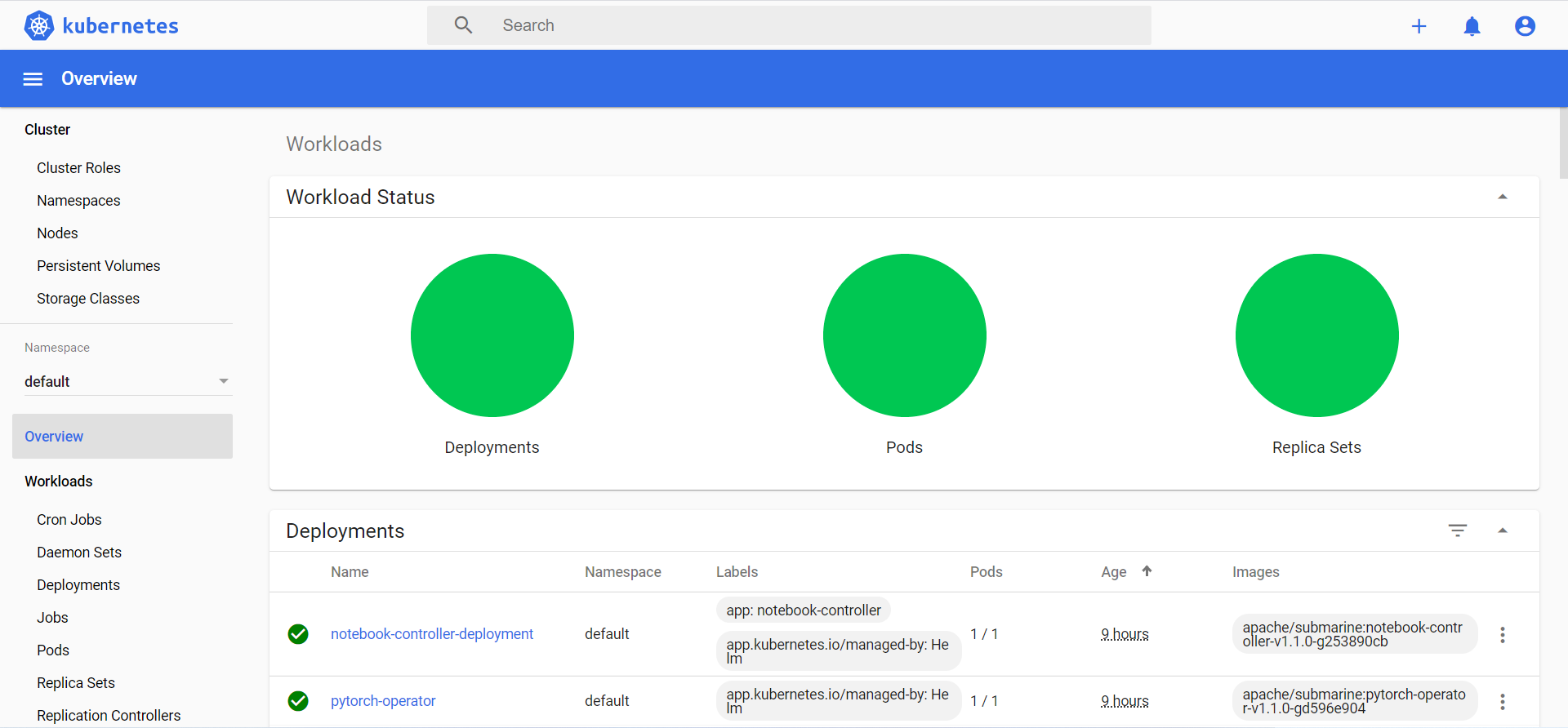Custom Configuation
Helm Chart Volume Type
Submarine can support various volume types, currently including hostPath (default) and NFS. It can be easily configured in the ./helm-charts/submarine/values.yaml, or you can override the default values in values.yaml by helm CLI.
hostPath
- In hostPath, you can store data directly in your node.
- Usage:
- Configure setting in
./helm-charts/submarine/values.yaml. - To enable hostPath storage, set
.storage.typetohost. - To set the root path for your storage, set
.storage.host.rootto<any-path>
- Configure setting in
- Example:
# ./helm-charts/submarine/values.yaml
storage:
type: host
host:
root: /tmp
NFS (Network File System)
- In NFS, it allows multiple clients to access a shared space.
- Prerequisite:
- A pre-existing NFS server. You have two options.
- Create NFS serverIt will create a nfs-server pod in kubernetes cluster, and expose nfs-server ip at
kubectl create -f ./dev-support/nfs-server/nfs-server.yaml10.96.0.2 - Use your own NFS server
- Create NFS server
- Install NFS dependencies in your nodes
- Ubuntu
apt-get install -y nfs-common - CentOS
yum install nfs-util
- Ubuntu
- A pre-existing NFS server. You have two options.
- Usage:
- Configure setting in
./helm-charts/submarine/values.yaml. - To enable NFS storage, set
.storage.typetonfs. - To set the ip for NFS server, set
.storage.nfs.ipto<any-ip>
- Configure setting in
- Example:
# ./helm-charts/submarine/values.yaml
storage:
type: nfs
nfs:
ip: 10.96.0.2
Access to Submarine Server
Submarine server by default expose 8080 port within K8s cluster. After Submarine v0.5
uses Traefik as reverse-proxy by default. If you don't want to
use Traefik, you can modify below value to false in ./helm-charts/submarine/values.yaml.
# Use Traefik by default
traefik:
enabled: true
To access the server from outside of the cluster, we use Traefik ingress controller and
NodePort for external access.\
Please refer to ./helm-charts/submarine/charts/traefik/values.yaml and Traefik docs
for more details if you want to customize the default value for Traefik.
Notice:
If you use kind to run local Kubernetes cluster,
please refer to this docs
and set the configuration "extraPortMappings" when creating the k8s cluster.
kind: Cluster
apiVersion: kind.x-k8s.io/v1alpha4
nodes:
- role: control-plane
extraPortMappings:
- containerPort: 32080
hostPort: [the port you want to access]
# Use nodePort and Traefik ingress controller by default.
# To access the submarine server, open the following URL in your browser.
http://127.0.0.1:32080
If minikube is installed, use the following command to find the URL to the Submarine server.
$ minikube service submarine-traefik --url
Kubernetes Dashboard (optional)
Deploy
To deploy Dashboard, execute the following command:
kubectl apply -f https://raw.githubusercontent.com/kubernetes/dashboard/v2.0.0-beta8/aio/deploy/recommended.yaml
Create RBAC
Run the following commands to grant the cluster access permission of dashboard:
kubectl create serviceaccount dashboard-admin-sa
kubectl create clusterrolebinding dashboard-admin-sa --clusterrole=cluster-admin --serviceaccount=default:dashboard-admin-sa
Get access token (optional)
If you want to use the token to login the dashboard, run the following commands to get key:
kubectl get secrets
# select the right dashboard-admin-sa-token to describe the secret
kubectl describe secret dashboard-admin-sa-token-6nhkx
Start dashboard service
kubectl proxy
Now access Dashboard at:
http://localhost:8001/api/v1/namespaces/kubernetes-dashboard/services/https:kubernetes-dashboard:/proxy/
Dashboard screenshot:
